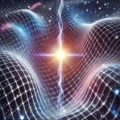Rethinking Gravity’s Story
The story of gravity is a journey from intuition to instrumentation, from falling apples to warped spacetime. Across centuries, scientists have layered insights — from the falling bodies of Galileo to the quantum fluctuations of vacuum energy. Each milestone brought us closer to understanding what gravity is not, even as the true mechanism remained elusive.
Traditional physics framed gravity as a consequence of mass, mediated either by geometric curvature (Einstein) or invisible force (Newton). But each leap forward also exposed a deeper paradox: How can mass — a property without known origin — warp spacetime, affect light, and govern motion across vacuum?
Charge Admittance (CA) revisits this history with fresh eyes. Instead of treating gravity as a fundamental force, it reframes it as an emergent effect of field response — not mass acting on space, but energy propagating through a structured, variable medium. The clues were there all along.
Historical Milestones
- Galileo Galilei, Disproved the idea that heavier objects fall faster. His real breakthrough? Revealing that gravity’s effects are independent of mass — an early hint that motion, not matter, may be the driver.
- Isaac Newton, Unified terrestrial and celestial motion under one law. His theory was elegant — but action at a distance, without a medium, left a mechanical hole.
- Charles-Augustin de Coulomb, Defined the inverse-square law for electric charge. Though lacking modern field theory, his work implied the presence of an invisible medium — a step toward structured space.
- Michael Faraday, Rejected abstraction in favor of reality. He introduced field lines, visualized induction, and made fields tangible — concepts that CA reclaims as physically real, not merely mathematical.
- James Clerk Maxwell, Unified electricity and magnetism into light. Decoded ε0 and μ0 — parameters that define vacuum behavior — but stopped short of seeing them as emergent from structure.
- Hendrik Lorentz, Built the math for relativistic transformations, showing that motion distorts measurements of space and time — but treated it as geometry, not energy flow.
- Max Planck, Discovered energy quantization. His constant, h, reveals the scale at which coherent energy exchange occurs — a physical limit that CA uses to define resonance thresholds.
- Albert Einstein, Gave mass the ability to bend space. General Relativity matched observation, but left the “why” unanswered — why do all objects, regardless of composition, fall the same?
- The quantum revolution deepened the paradox. Reinstated fields as the fundamental layer of reality. But gravity remained disconnected — geometry and quantum vacuum didn’t speak the same language. Until now.
